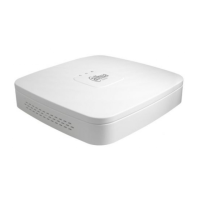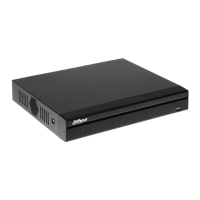Local Configurations 24
Hyper Text Transfer Protocol over Secure Socket Layer port. Select the Enable
check box, and then enter the value according to your actual situation. The default
setting is 443.
Real Time Streaming Protocol port. The default setting is 554. If the default
setting is displayed, you do not need to configure this parameter. If you use
Apple browser QuickTime or VLC to play the real-time monitoring screen, the
following formats can be used: This function is also supported by Blackberry
mobile phone.
The real-time monitoring stream URL format. When requesting for real-time
monitoring stream RTSP service, the channel number and stream type should
be specified in URL. If the information must be certified, the user name and
password also should be provided.
When accessing the Device from BlackBerry mobile phone, set the encode
mode to be H.264B and resolution to be CIF, and turn off audio function.
URL format instruction:
Rtsp://<user name>:<password>@<IP
address>:<port>/cam/realmonitor?channel=1&subtype=0
Username: For example, admin.
Password: For example, admin_123.
IP address: For example, 192.168.1.16.
Port: The default setting is 554. If the default setting is displayed, you do not
need to configure this parameter.
Channel: Numbers from 1. For example, if it is channel 2, then enter channel=2.
Subtype: stream type. The main stream is 0 (subtype=0); the sub stream is 1
(subtype=1).
For example, when you want to get the sub stream of channel 2 from a device,
refer to the following URL format:
rtsp://admin:admin_123@192.168.1.16:554/cam/realmonitor?channel=2&subtype=1
If certification is not required, the user name and password are not need to be
provided. Use the following format:
rtsp:// <IP address>:<port>/cam/realmonitor?channel=1&subtype=0
MTU value of Ethernet card. The default setting is 1500 byte.
IP address of DNS server.
IP address of Alternate DNS.
(Optional) Configure network service settings. Step 3
Perform this step when you need to apply DDNS, Email, FTP, P2P, and Switch settings.
1) Click NETWORK SETTING.
The NETWORK SETTING interface is displayed. See Figure 4-7.
